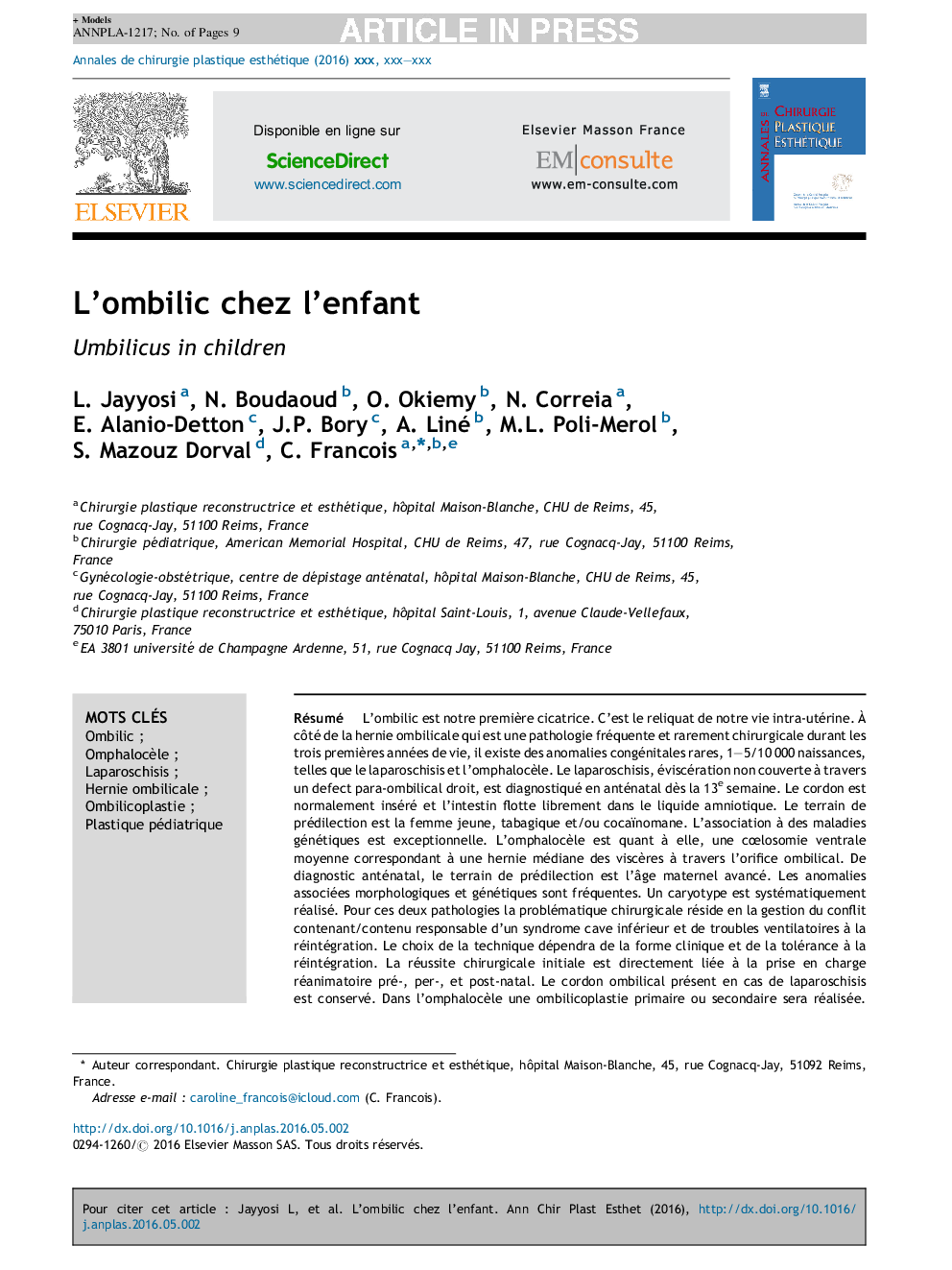| کد مقاله | کد نشریه | سال انتشار | مقاله انگلیسی | نسخه تمام متن |
|---|---|---|---|---|
| 5644613 | 1406996 | 2016 | 9 صفحه PDF | دانلود رایگان |
عنوان انگلیسی مقاله ISI
L'ombilic chez l'enfant
ترجمه فارسی عنوان
بند ناف در کودکان
دانلود مقاله + سفارش ترجمه
دانلود مقاله ISI انگلیسی
رایگان برای ایرانیان
کلمات کلیدی
موضوعات مرتبط
علوم پزشکی و سلامت
پزشکی و دندانپزشکی
امراض پوستی
چکیده انگلیسی
The umbilicus is our first scar. It is the last remain of our life in utero. Besides the umbilical hernia, a common pathology during the first three years of life that rarely requires surgery, there are some rare congenital abnormalities such as gastroschisis and omphalocele, which occur in about 1-5/10,000Â births. Gastroschisis is a birth defect of the anterior abdominal wall, through which the fetal intestines freely protrude and are not covered by any membranes. During the 13th week prenatal ultrasound, the umbilical cord can be seen to be properly attached while the intestines float freely in the amniotic fluid. This defect is most common in young women who smoke and/or use cocaine and is not typically associated with genetic disorders. Omphalocele is an average coelosomy, in which a visceral hernia protrudes into the base of the umbilical cord. Omphalocele is typically diagnosed during the prenatal phase, and occurs most commonly in older mothers. It is frequently associated with genetic and morphologic abnormalities, therefore a karyotype should automatically be performed. For these two pathologies, the surgical problem lies in managing, during the reintegration, the conflict container/content responsible to lower vena cava syndrome and disorders ventilatory. Deciding on the technique will depend on the clinical form, and on the tolerance to reinsertion. The success of the surgery is directly linked to the postoperative emergence care for the pre-, per- and postnatal phases. The umbilical cord is preserved in the case of a gastroschisis. A primary or secondary umbilicoplasty will be performed for an omphalocele closure. The umbilicoplasty aims to create an umbilicus in a good position by giving it a shape, ideally oval, but also and especially an umbilication. The primary or secondary umbilicoplasty remains a challenge in a growing abdomen (change in position, deformation, loss of intussusception with growth). Many techniques are described: cutaneous flaps randomly placed, excision and skin plasty, resection and controlled wound healing. The choice of technique is a matter of practice but must be done in a rational way, depending on the scar condition when secondary reconstruction, and with minimal scarring, for primary reconstruction. To avoid morphological changes associated with growth, secondary umbilicoplasty should be proposed after the age of five.
ناشر
Database: Elsevier - ScienceDirect (ساینس دایرکت)
Journal: Annales de Chirurgie Plastique Esthétique - Volume 61, Issue 5, October 2016, Pages 713-721
Journal: Annales de Chirurgie Plastique Esthétique - Volume 61, Issue 5, October 2016, Pages 713-721
نویسندگان
L. Jayyosi, N. Boudaoud, O. Okiemy, N. Correia, E. Alanio-Detton, J.P. Bory, A. Liné, M.L. Poli-Merol, S. Mazouz Dorval, C. Francois,
